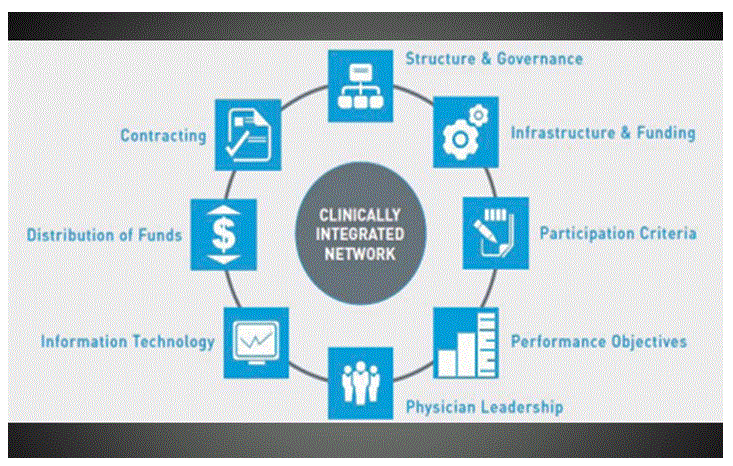The clinically integrated network is broken down into 8 components, which we will explore over the next few bits. The slide below shows these 8 elements. Actually, there is a lot of flexibility within each element, but in order to avoid violation of FTC law, we must show that our network demonstrates the necessary components, in order to negotiate payer contracts as one network.
A. Structure & Governance:
We must organize the network in a structure that supports increased care coordination and performance improvement. Of the commonly used legal models, the physician hospital organization by joint venture fits best. This maintains physician ownership of their practice independently and separate from hospitals in the network. Members sign a participation agreement and governance of this new entity is separate from the hospitals and independent practices participating, but made up of the constituents.
B. Infrastructure & Funding:
The network entity must be a separate business entity with its own identity, mission and vision, dedicated leadership & staff, sustainable sources of revenue and the participating agreements as above. The key CIN roles include a Board of Managers and a leadership team that is responsible for oversight of clinical quality, provider relations, credentialing and operations. Sustainable revenue can evolve, from membership fees to payer contracts once mature, but the network may sustain losses from the initial start-up period and therefore requires financial modeling and management.
C. Participation Criteria:
Specific participation criteria are recommended, such as professional & program standards, IT requirements, physician engagement and performance review processes. The essence is to develop an atmosphere of transparency, communication, and coordination. There is a fair amount of flexibility here and the key is that the network members decide on their own operational standards and priorities.
Next time, we continue with physician leadership, performance objectives and information technology.
